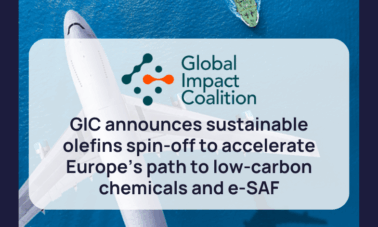 As part of our mission to enable a net-zero future for chemicals, the Global Impact Coalition recently launched the “Turn the Mic on the Media” initiative to hear directly from the journalists who shape public discourse around sustainability in the chemical industry. By reversing the roles, we aim to better understand the media’s perspective on the key trends, challenges, and opportunities influencing the industry’s sustainability transition.
As part of our mission to enable a net-zero future for chemicals, the Global Impact Coalition recently launched the “Turn the Mic on the Media” initiative to hear directly from the journalists who shape public discourse around sustainability in the chemical industry. By reversing the roles, we aim to better understand the media’s perspective on the key trends, challenges, and opportunities influencing the industry’s sustainability transition.
In this unique dialogue, journalists provided insights into the most pressing issues facing the sector today. Among the leading topics, one has emerged front and center: industrial defossilization and emissions reductions, where discussions have shifted from “if” significant emissions reduction is possible to “how” it can be achieved. Craig Bettenhausen of C&EN (acs.org) observes that the chemical industry is engaging in lively debates around technologies like carbon capture, green hydrogen, and renewable energy. John Richardson of ICIS.com highlights the struggle to balance sustainability with economic realities, emphasizing that social media-driven tribalism can obscure the complexities of solving the carbon emissions and plastic waste crises.
As industries strive to meet 2025 sustainability targets, Victor Cheng, Executive Editor of China Plastic & Rubber Journal (adsalecprj.com), predicts a heightened focus on recycled materials and how companies will tackle Scope 3 emissions—indirect emissions throughout the value chain. Meanwhile, Sarah George, content editor at edie.net, points to the increasing pressure on industries to prepare for climate-related risks and meet evolving ESG regulations.
Could there be hope through collaboration and AI? Paolo Spinelli of Plastmagazine predicts the sustainability trends will intensify with more focus on AI-driven sustainability solutions such as using AI and automation to optimize resource use, energy consumption, and production efficiency while minimizing waste. There is also broad agreement on the role that coalitions like the Global Impact Coalition can play to support this transition, facilitating “collaborative innovation,” advocating for policy change, accelerating cross-industry circular economy models, and driving market demand for sustainable products.
The pathway to a sustainable future, however, is riddled with challenges. Karen Laird of Sustainable Plastics believes that clarity around chemical recycling and a shift in pricing structures could spur industry-wide change. Laird calls for more robust recycling infrastructures, where recycled materials become the preferred choice over virgin plastics. For John Richardson, regulation plays a pivotal role, but he argues that we must acknowledge the continued necessity of hydrocarbon feedstocks while encouraging more circular and carbon-reducing processes.
Financing the sustainability transition remains another major obstacle. Bettenhausen warns against over-reliance on government funding, stressing that industry leaders must unlock private capital and retire carbon-intensive assets even when these remain financially viable. He emphasizes the need for bold financial decisions to achieve meaningful decarbonization.
Public expectations for the chemical industry are evolving rapidly. Consumers and businesses alike are demanding more sustainable production processes, with a focus on low-carbon energy sources and advanced recycling technologies. Cheng stresses the importance of reducing the cost of green materials to facilitate industry-wide adoption, while Bettenhausen sees an urgent need for more technological innovations to address CO2 emissions and energy storage.
In this complex landscape, coalitions such as the Global Impact Coalition (GIC) can play an instrumental role in driving collaboration. Cheng sees coalitions as vital bridges between the industry and governmental bodies, aiding in the formulation of policies that balance economic needs with sustainability goals. Bettenhausen adds that sharing successes and failures across the industry is essential to avoid duplicating efforts, while Richardson believes that fostering partnerships along new sustainable supply chains will enable the chemical industry to thrive in a low-carbon future.
As the chemical industry faces growing pressures to lead the way in sustainability, these expert insights reflect the need for innovation, collaboration, and decisive action to drive meaningful progress toward a net-zero and circular future.











